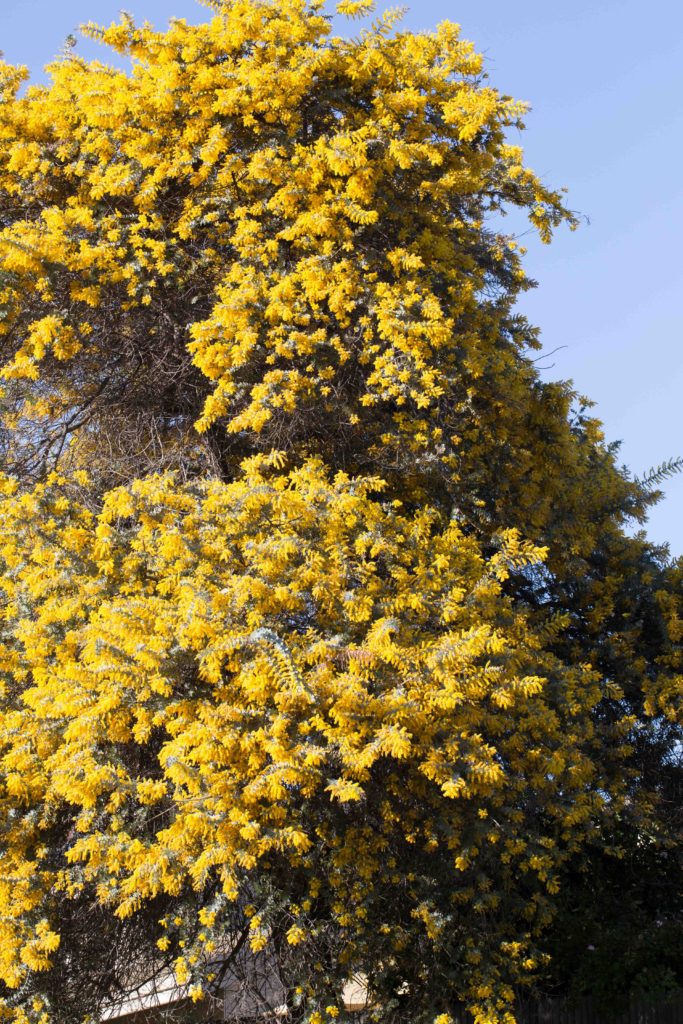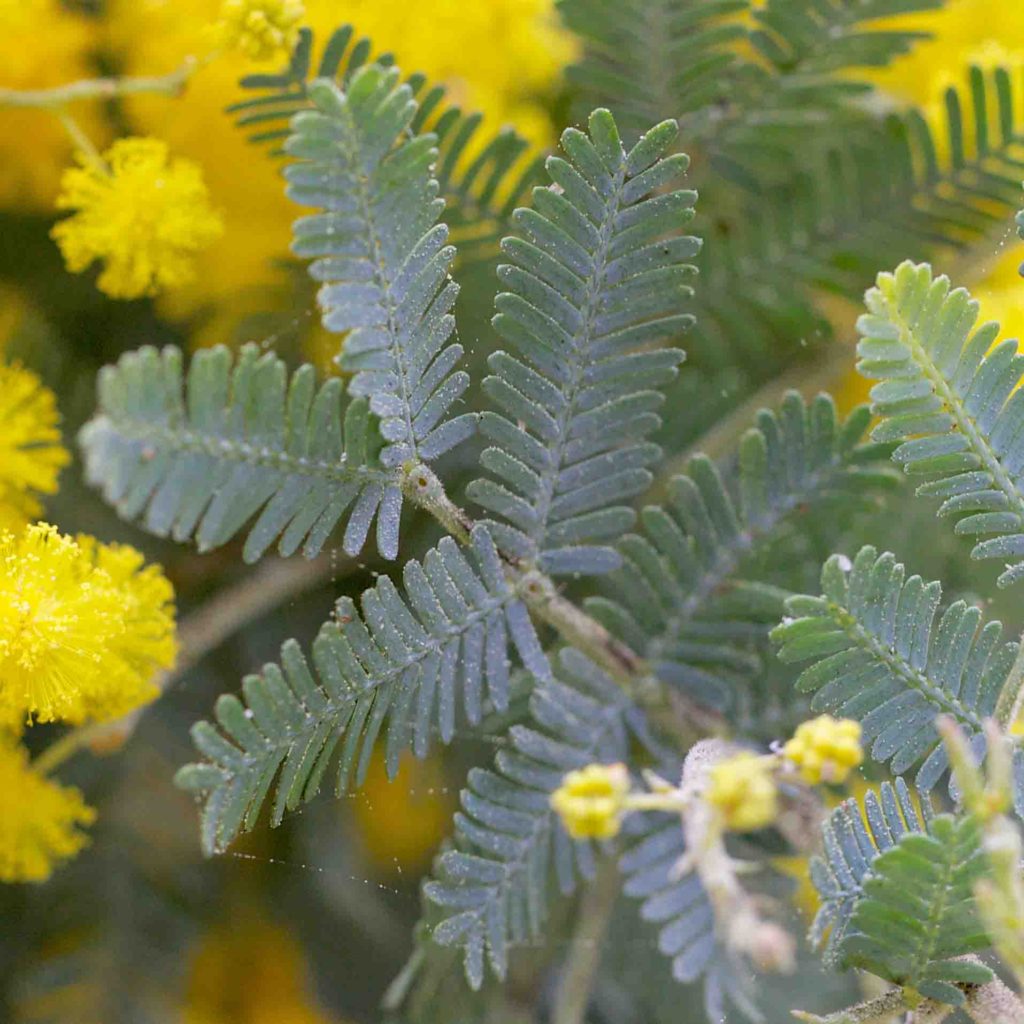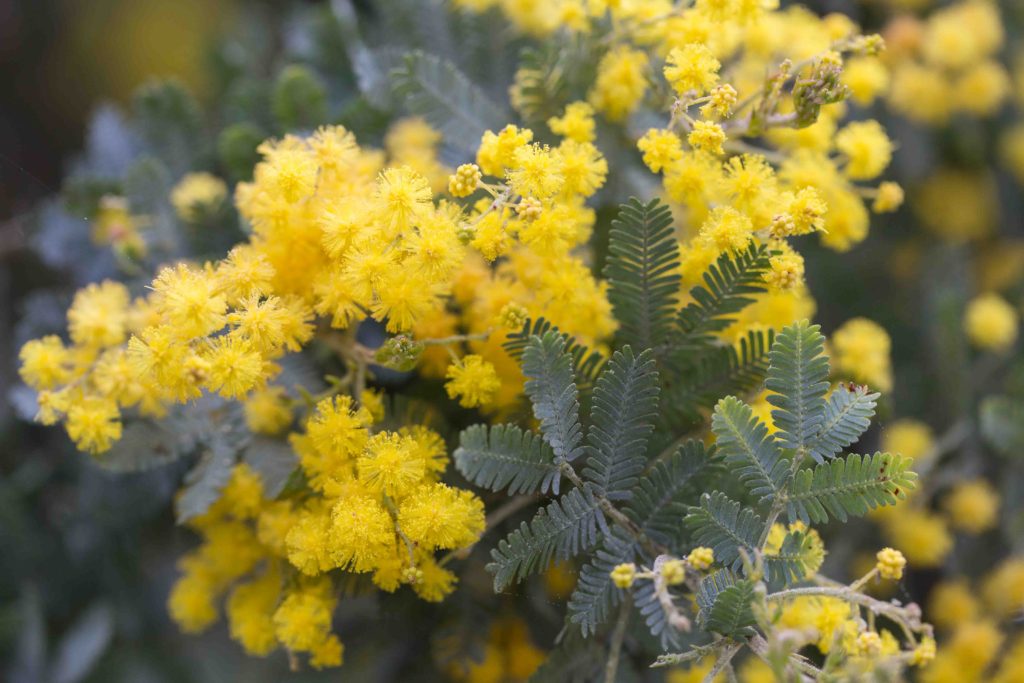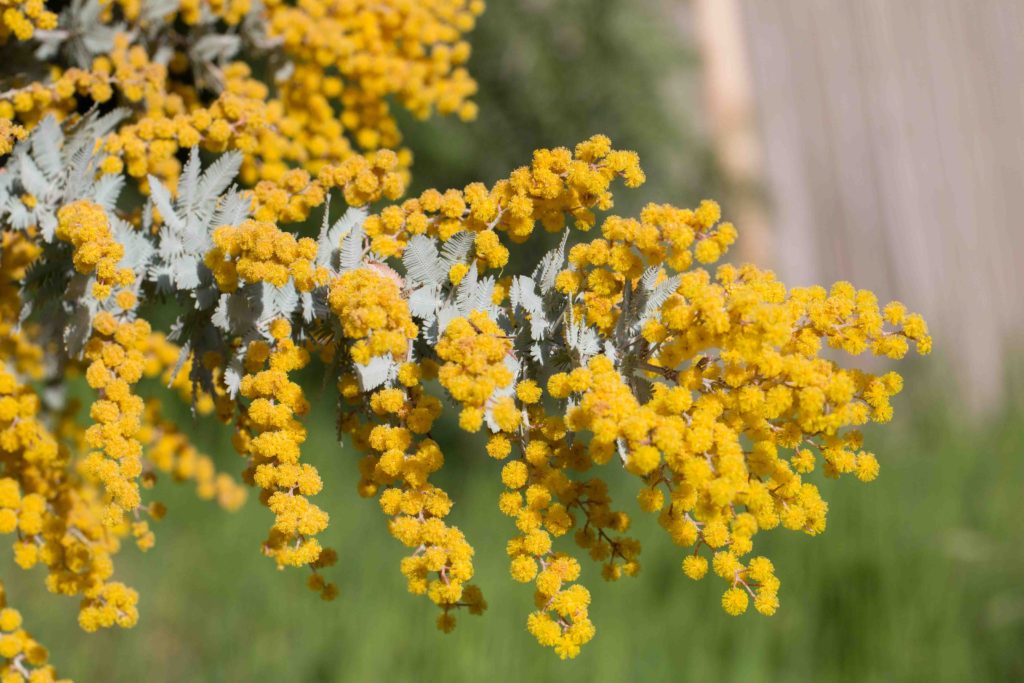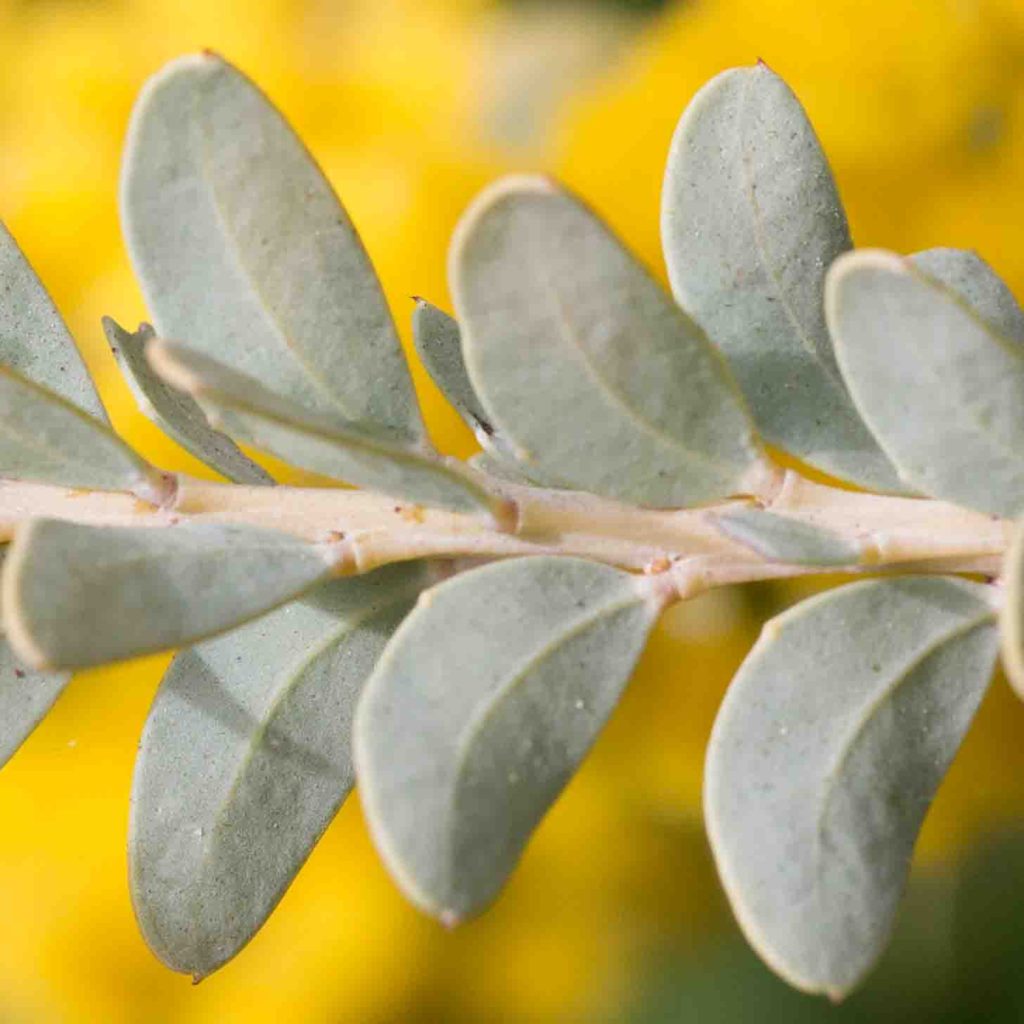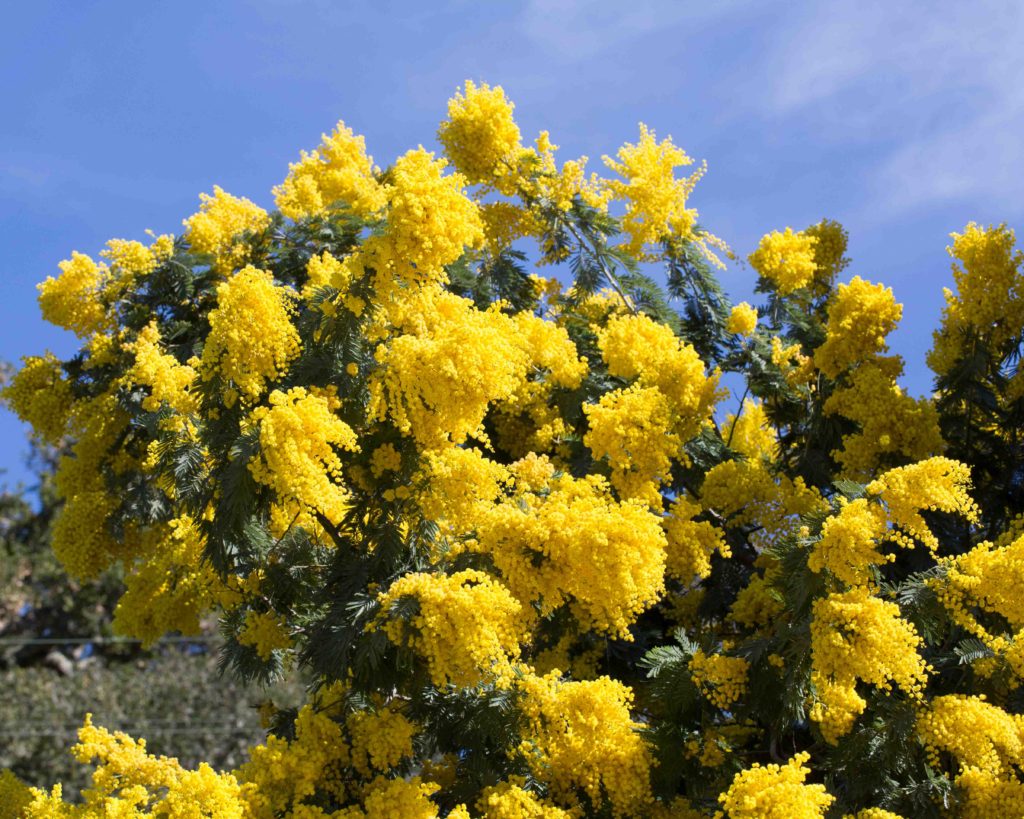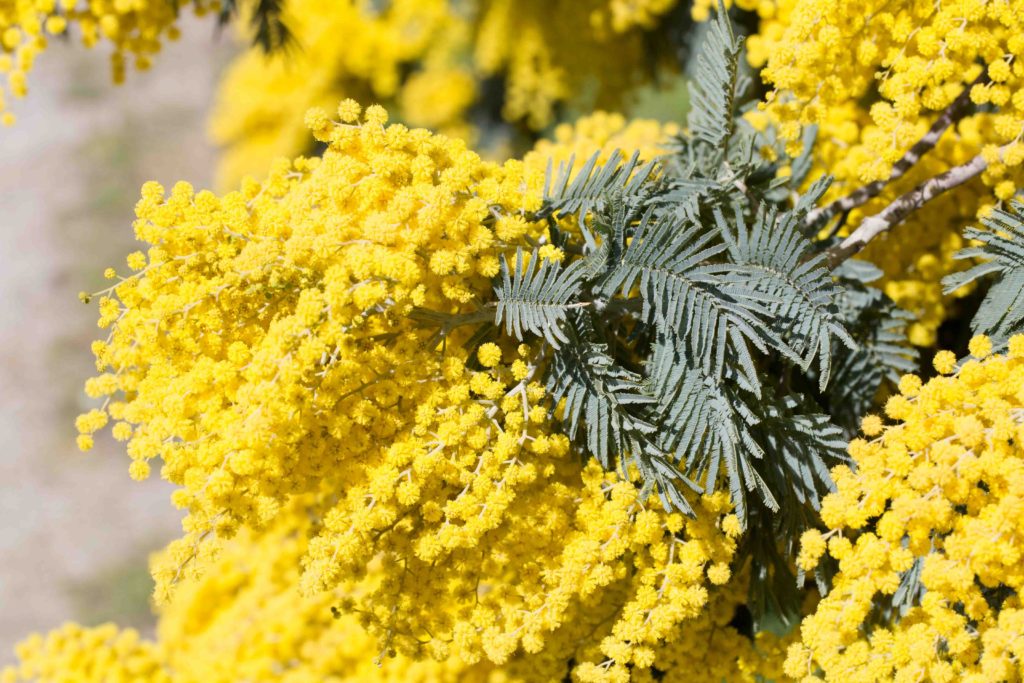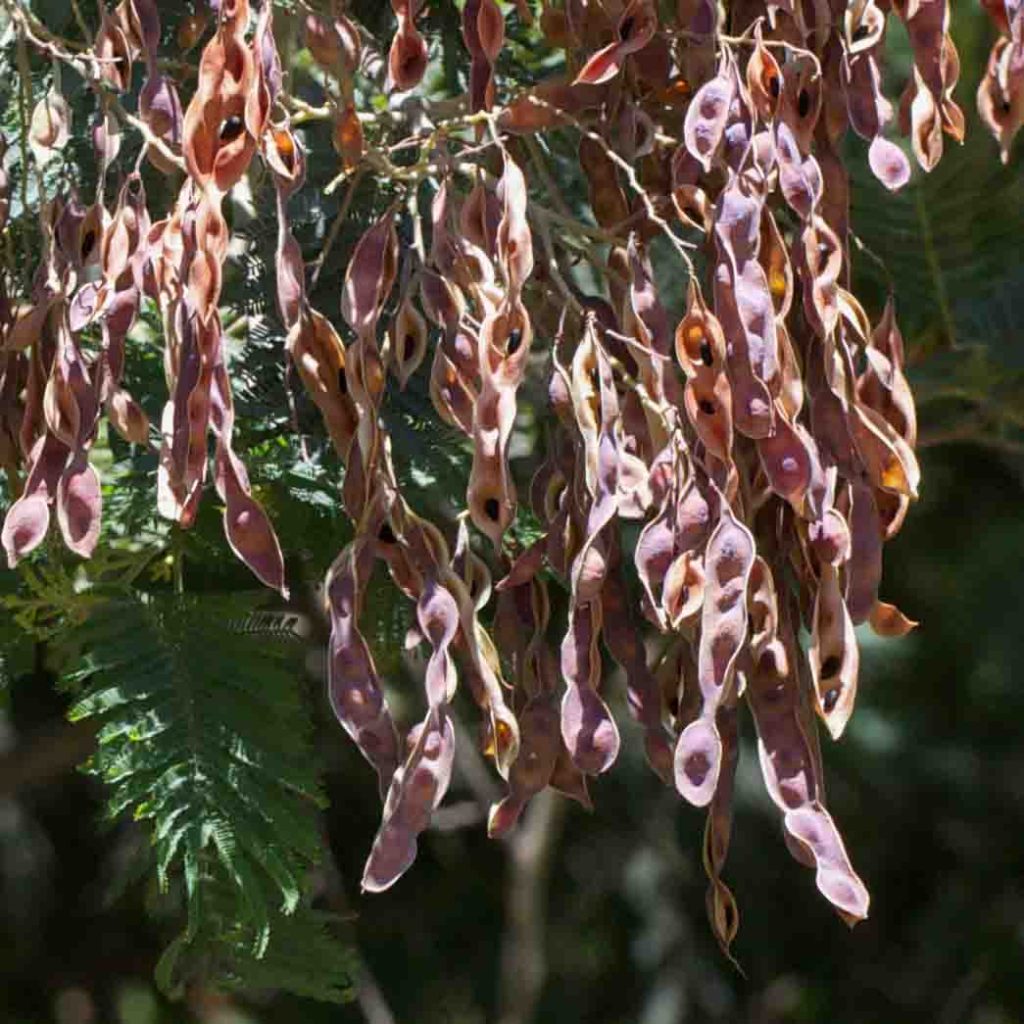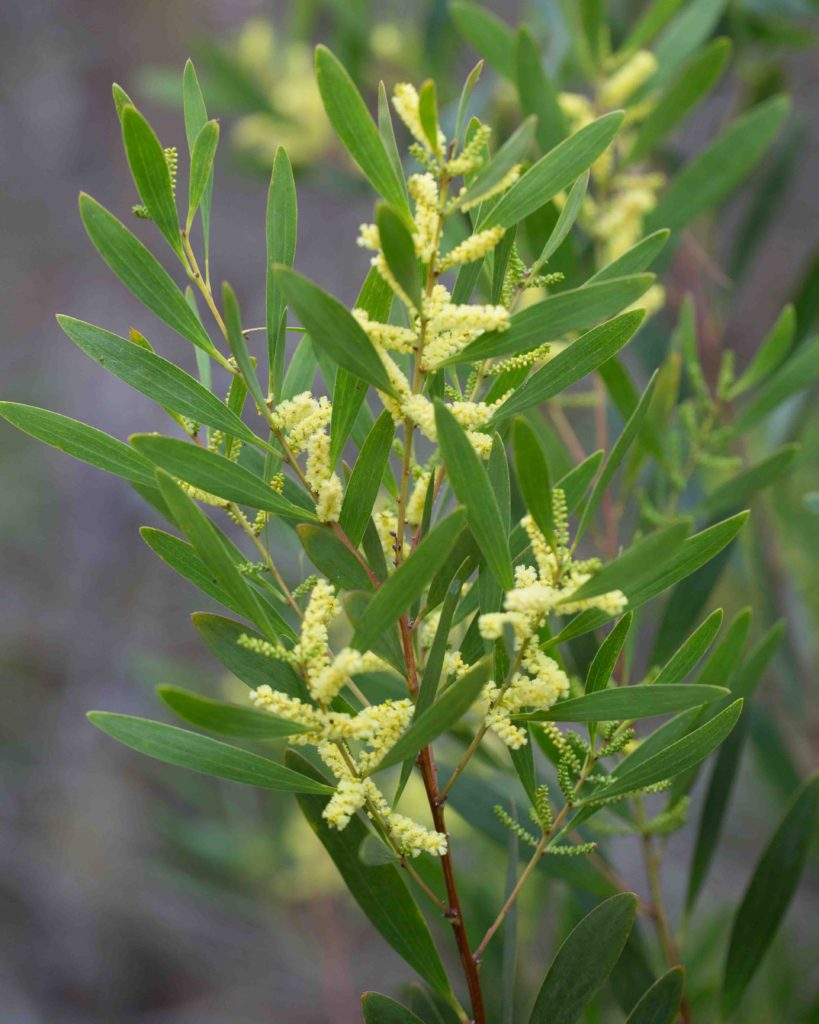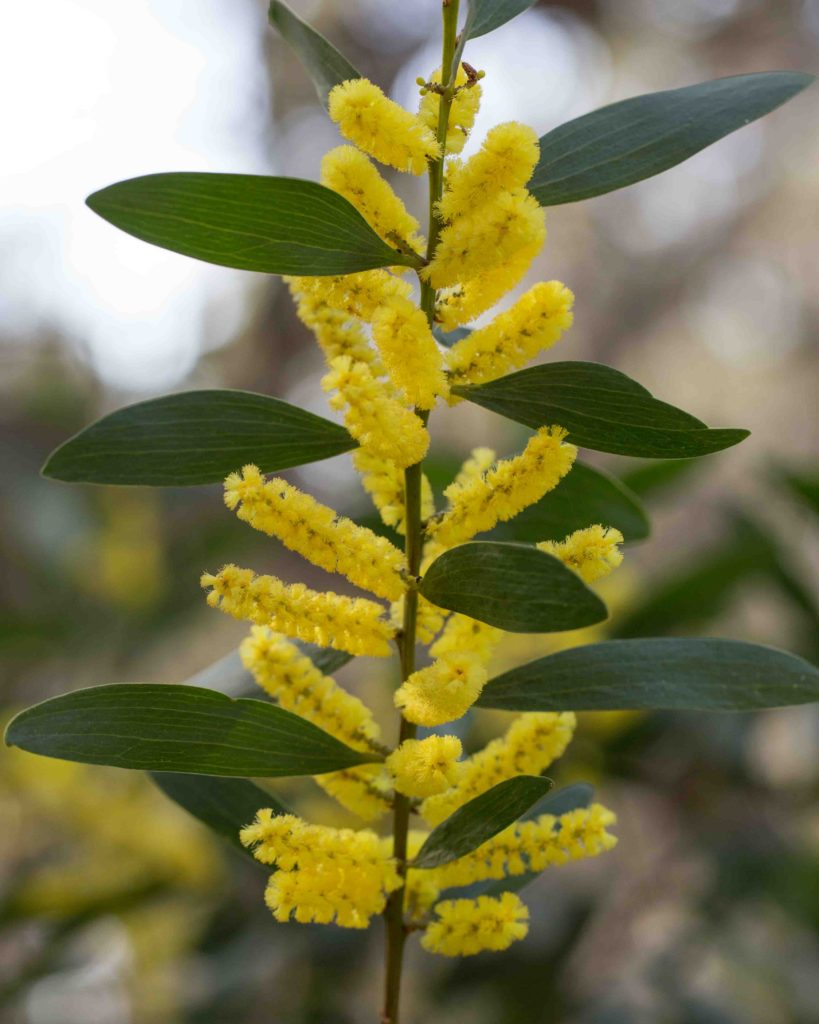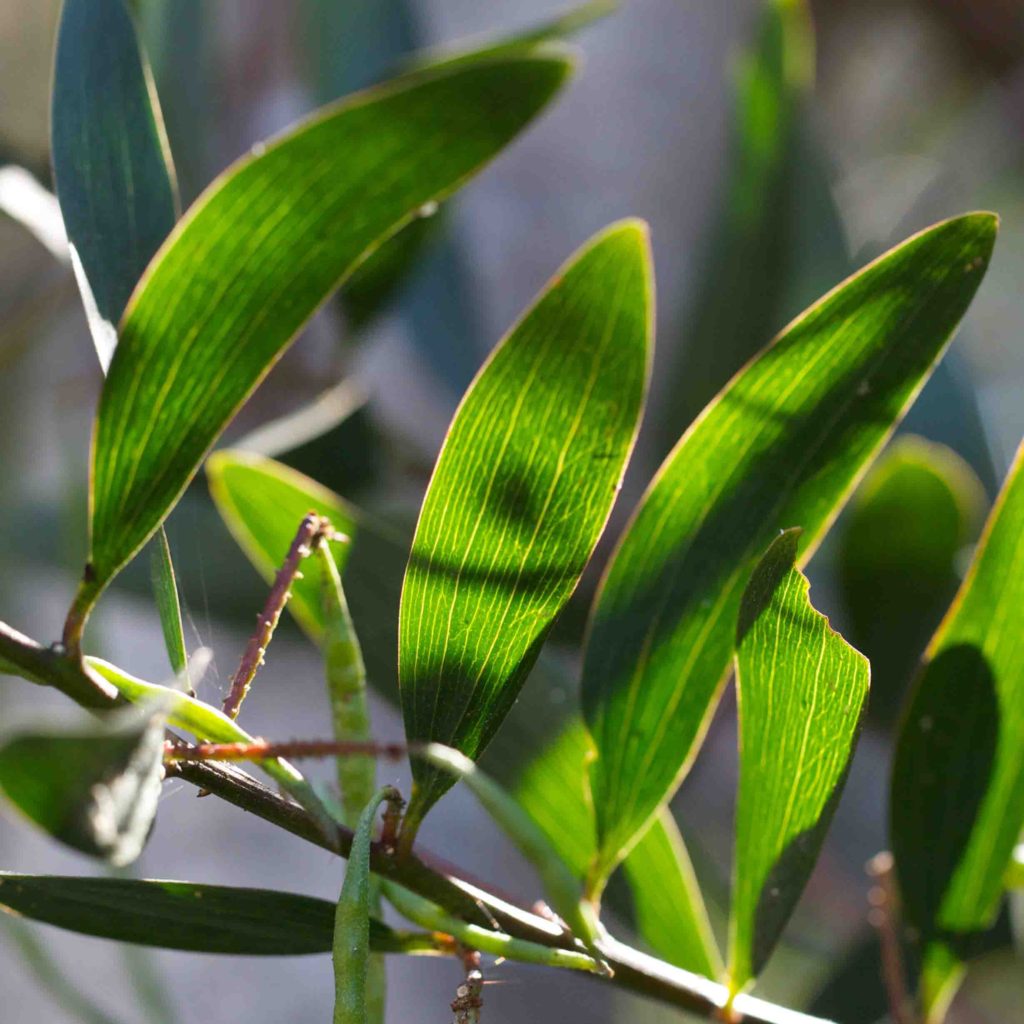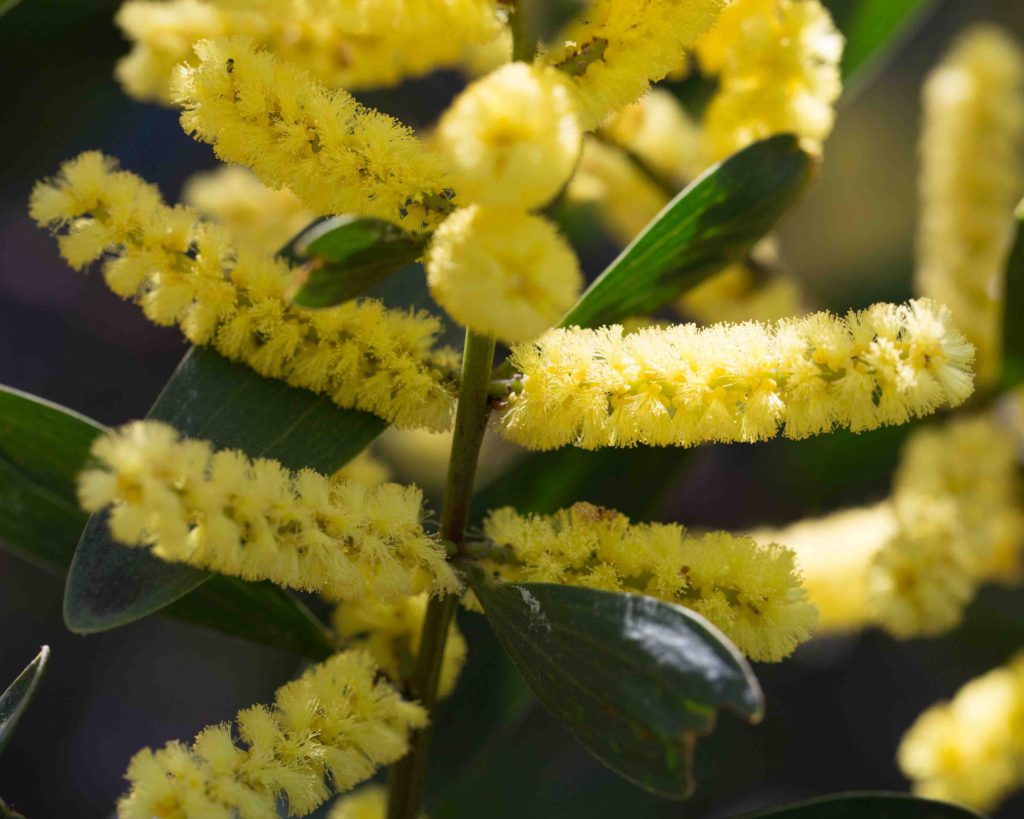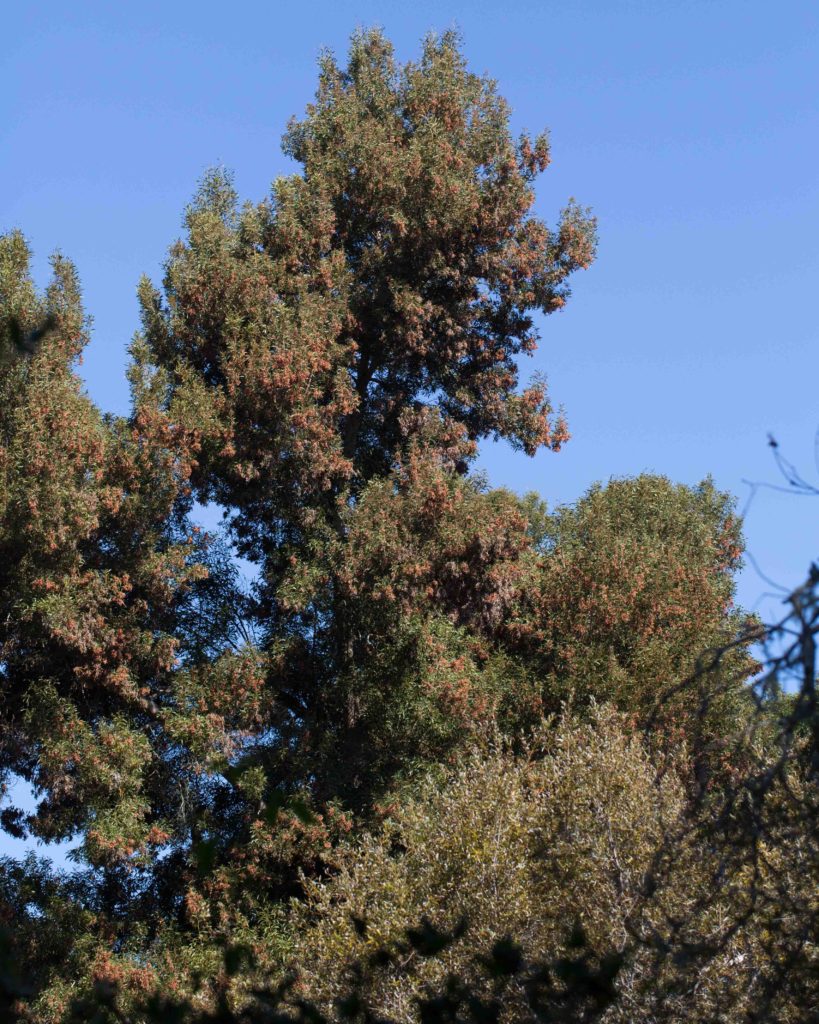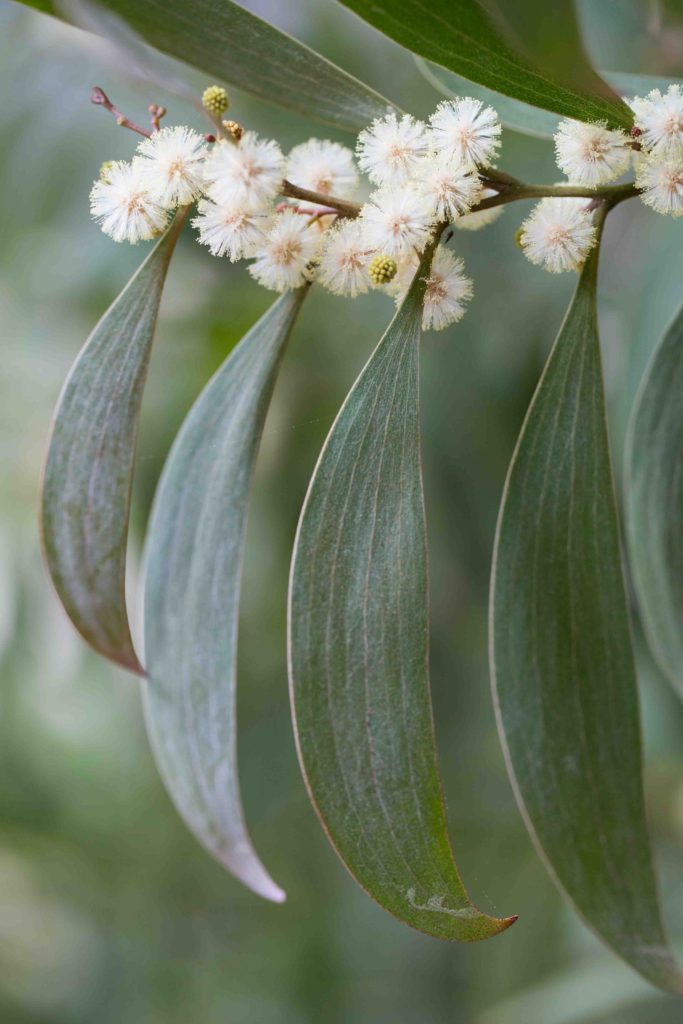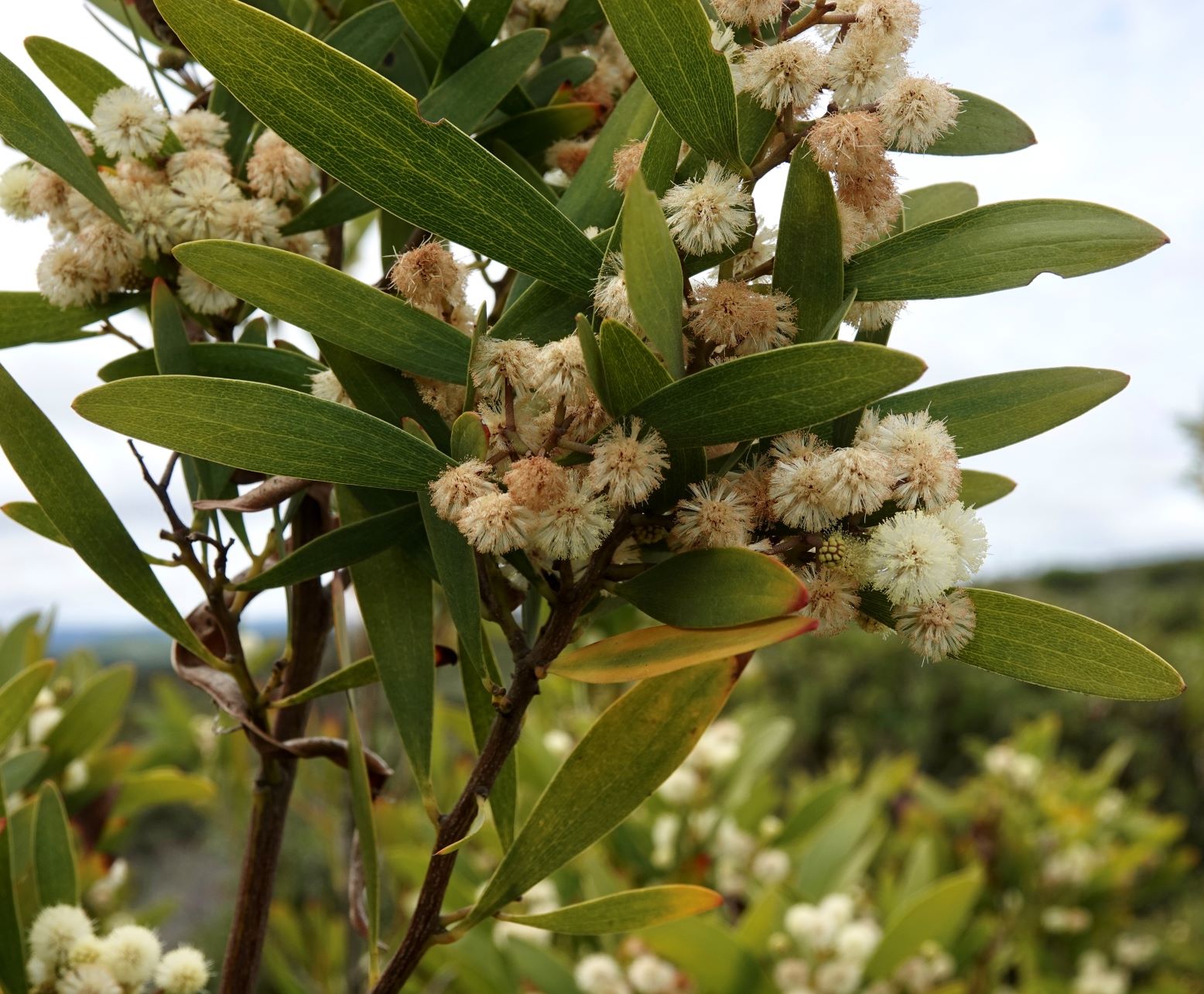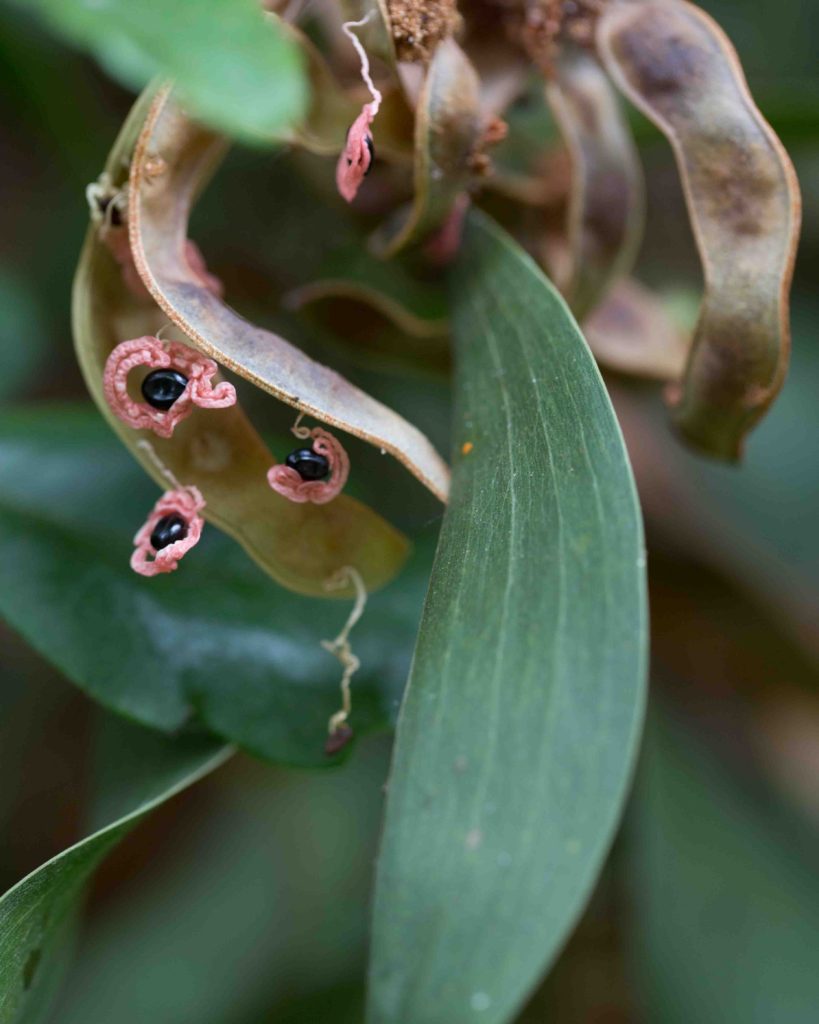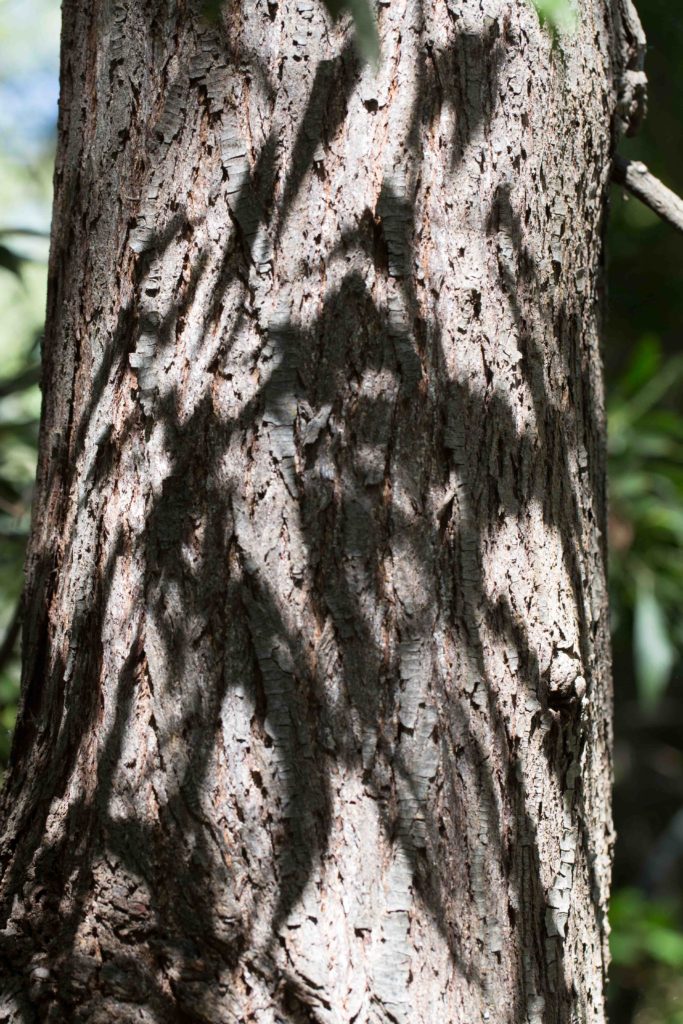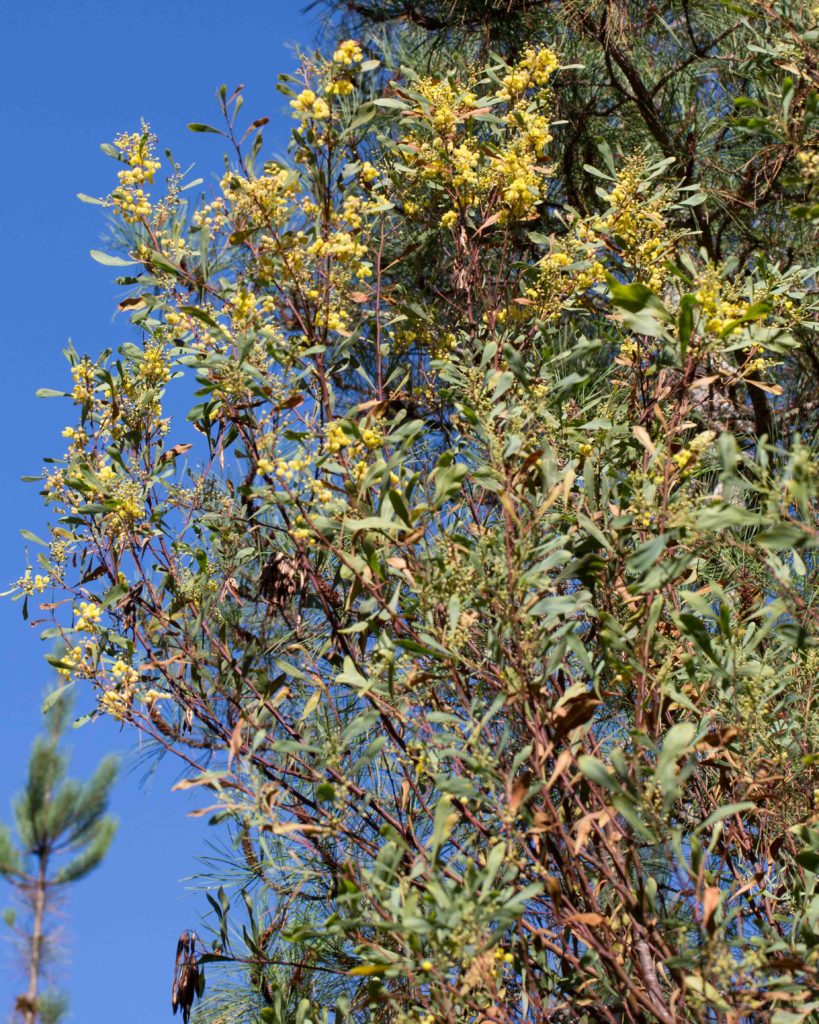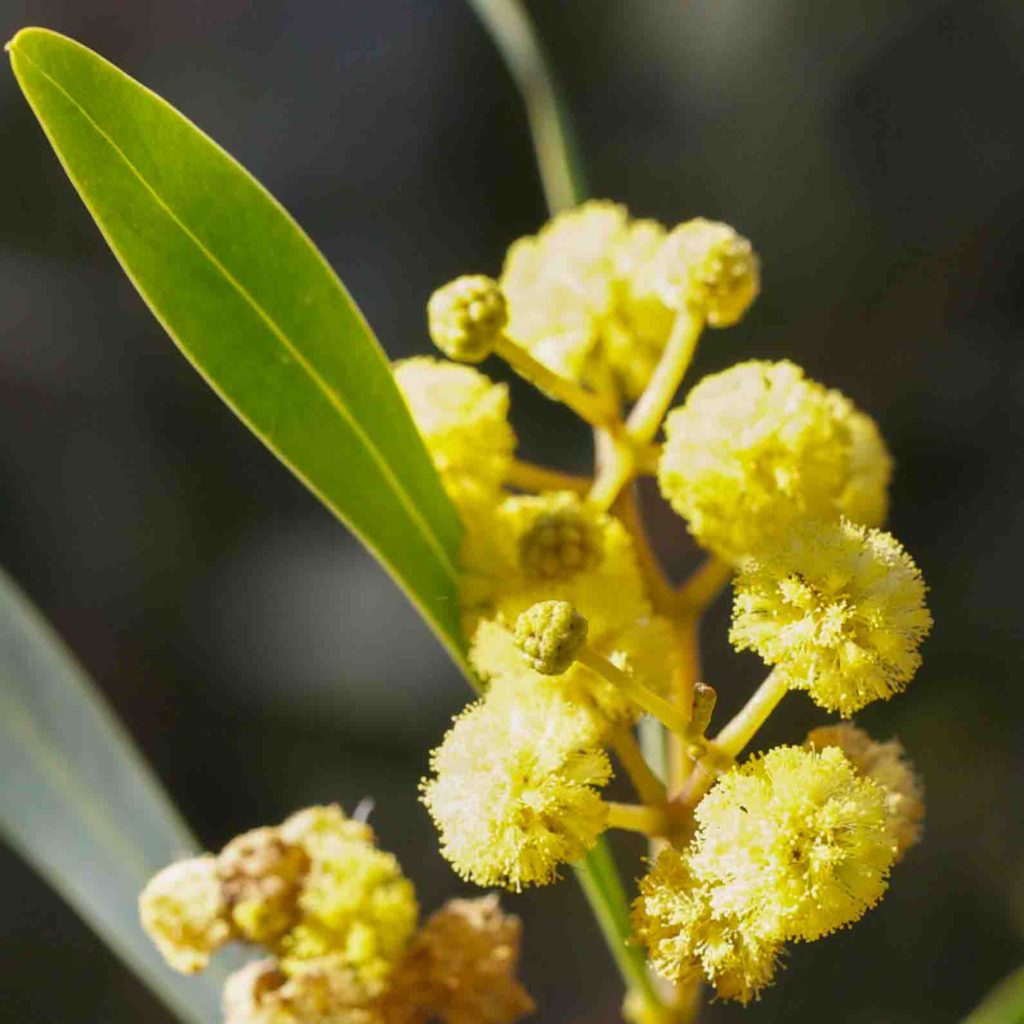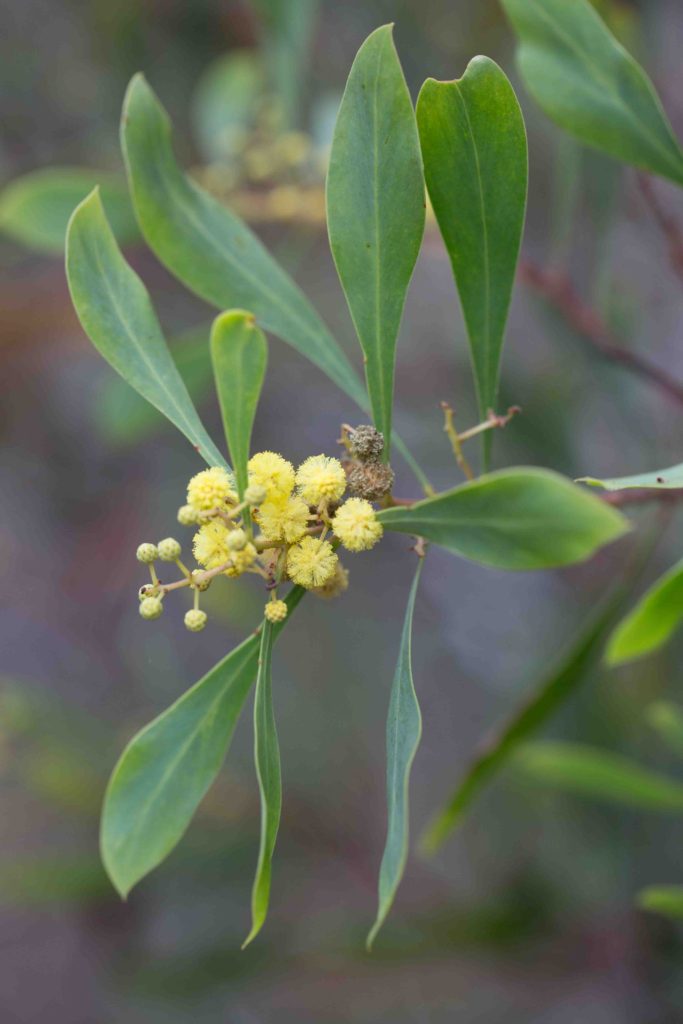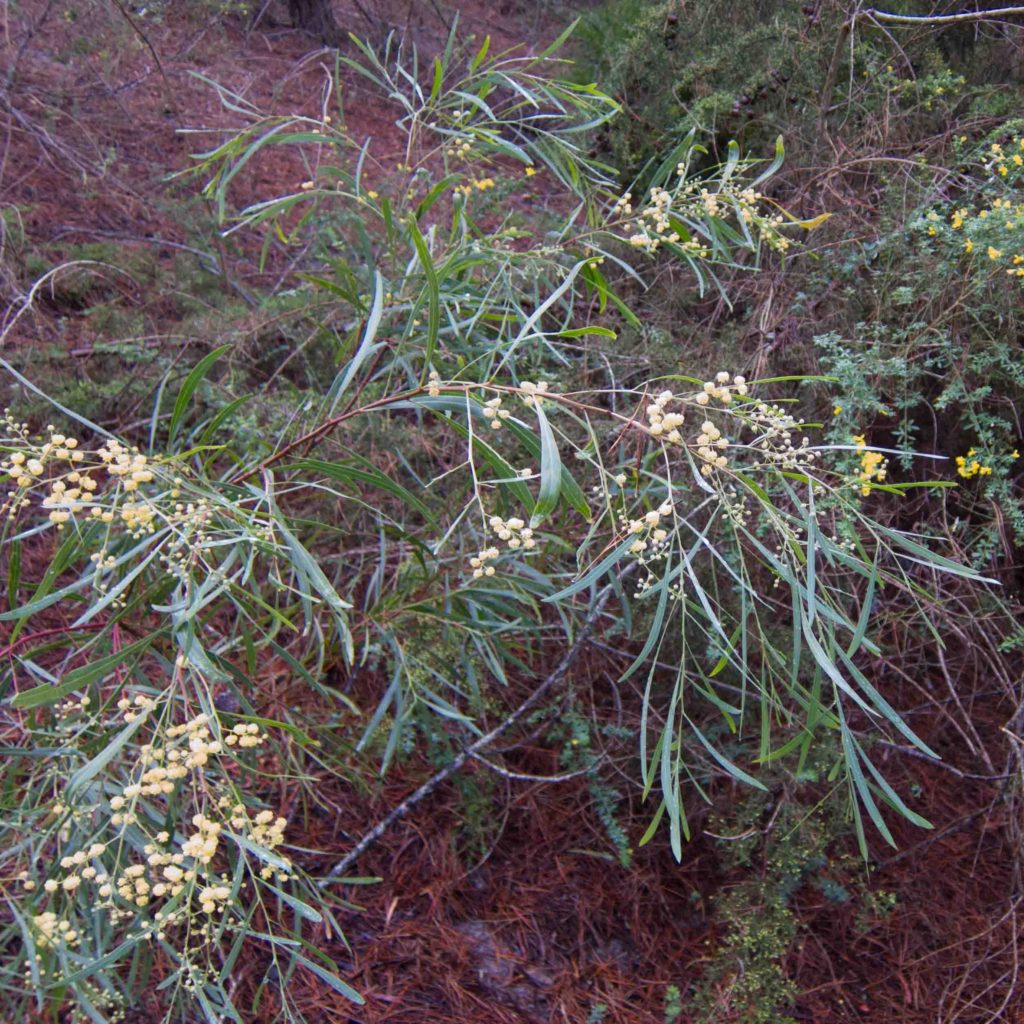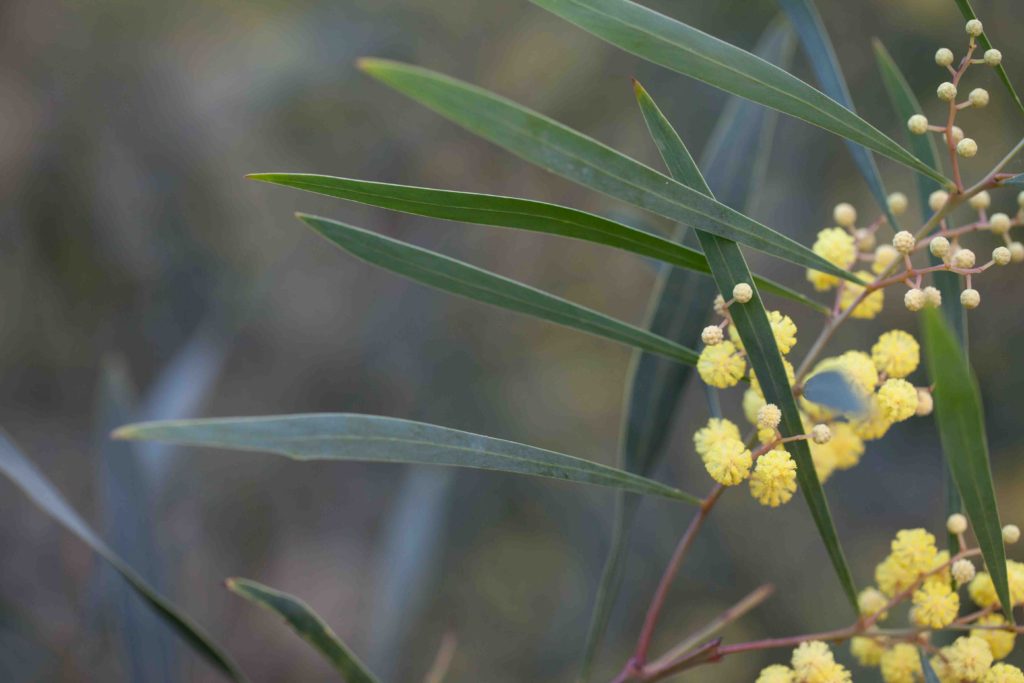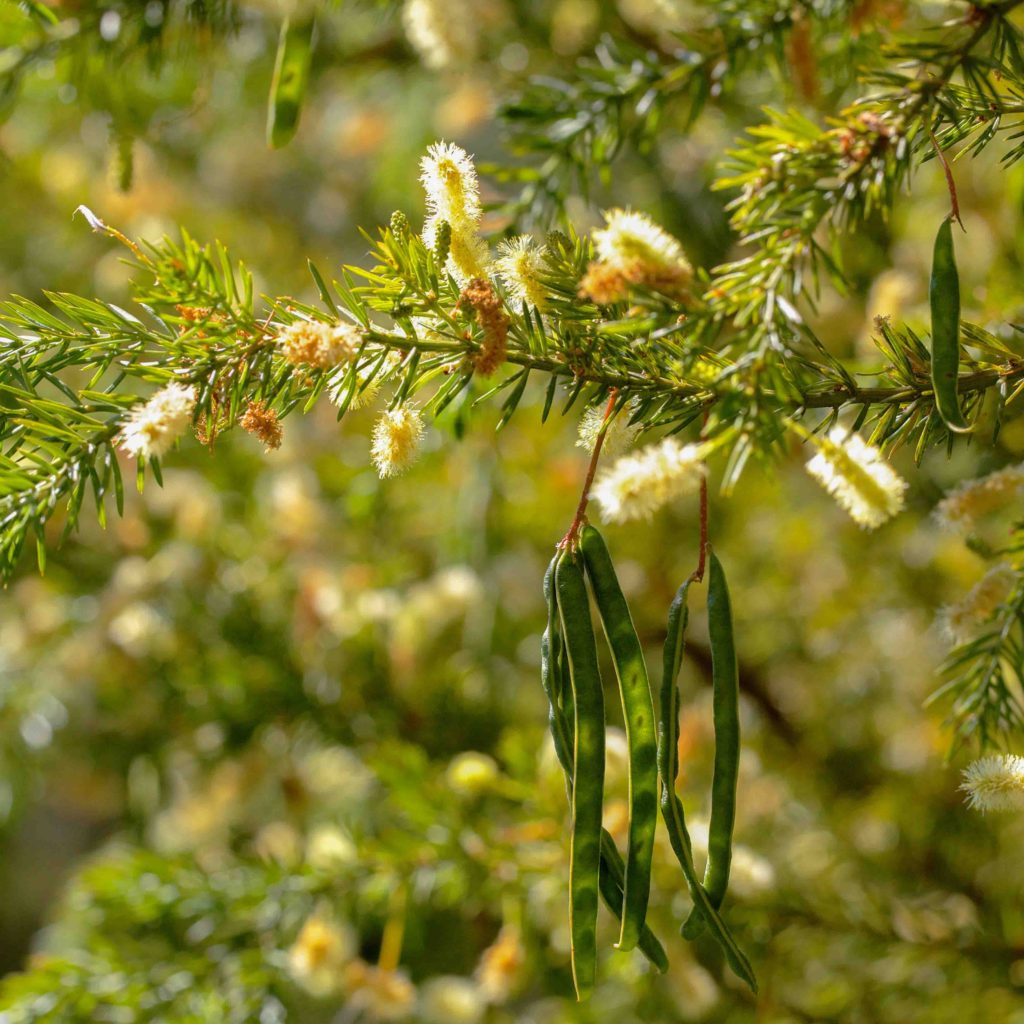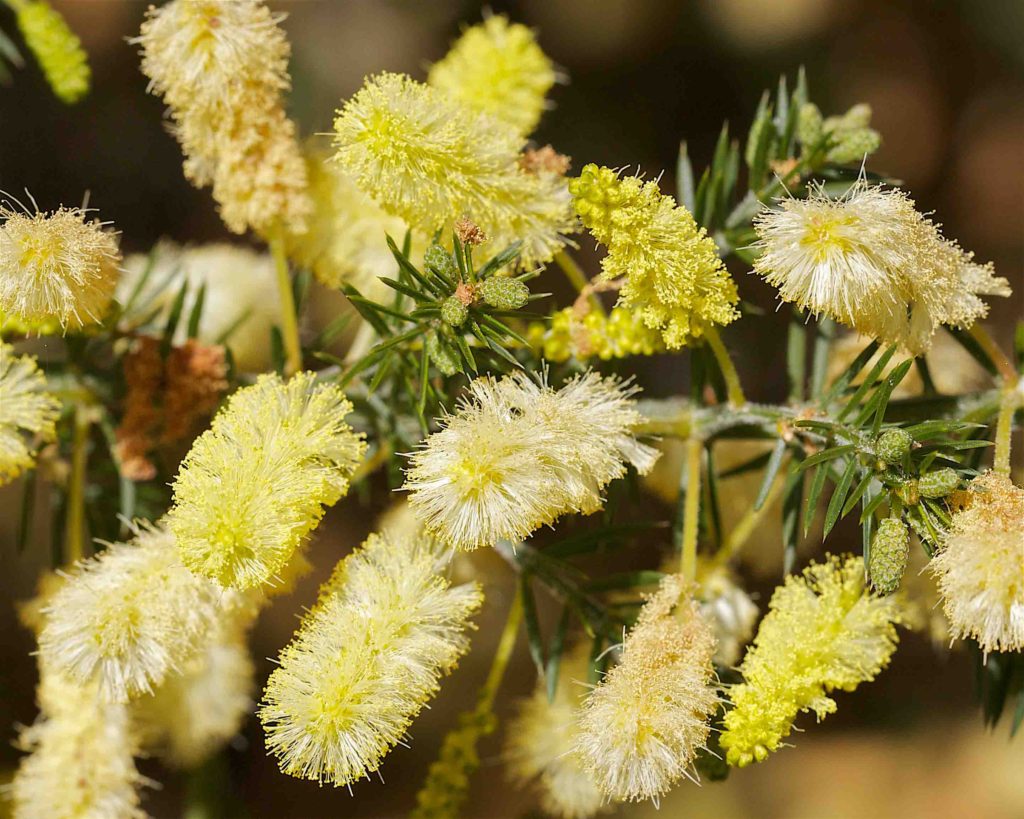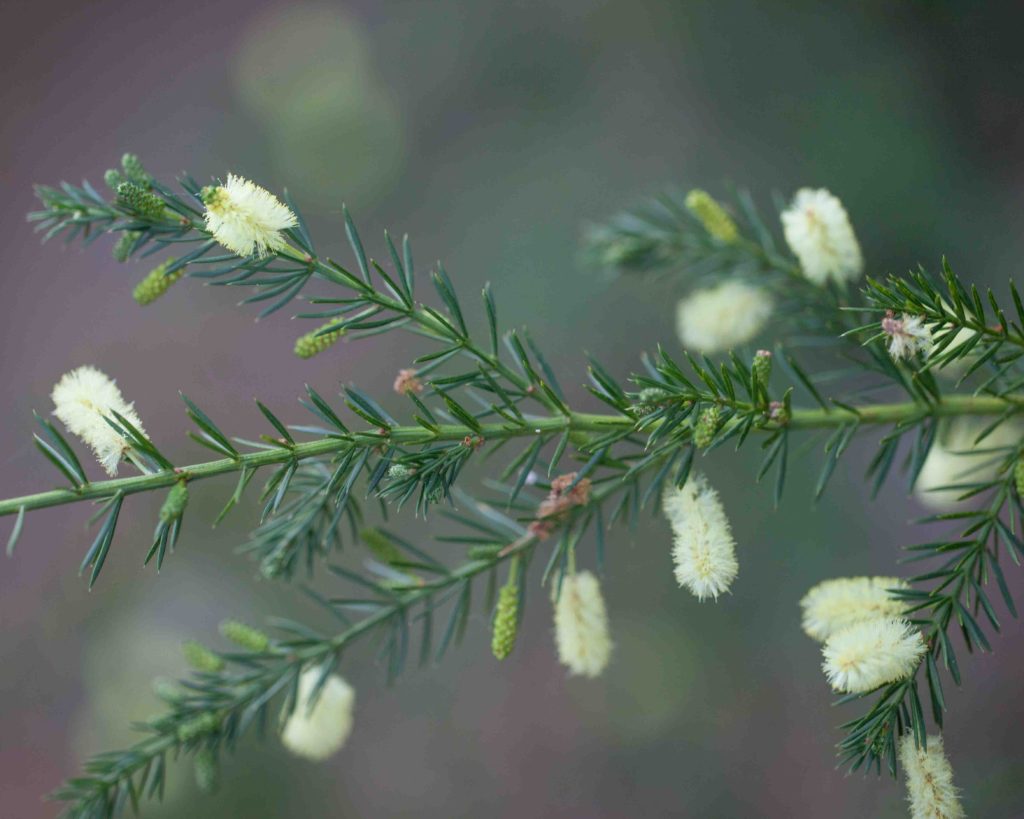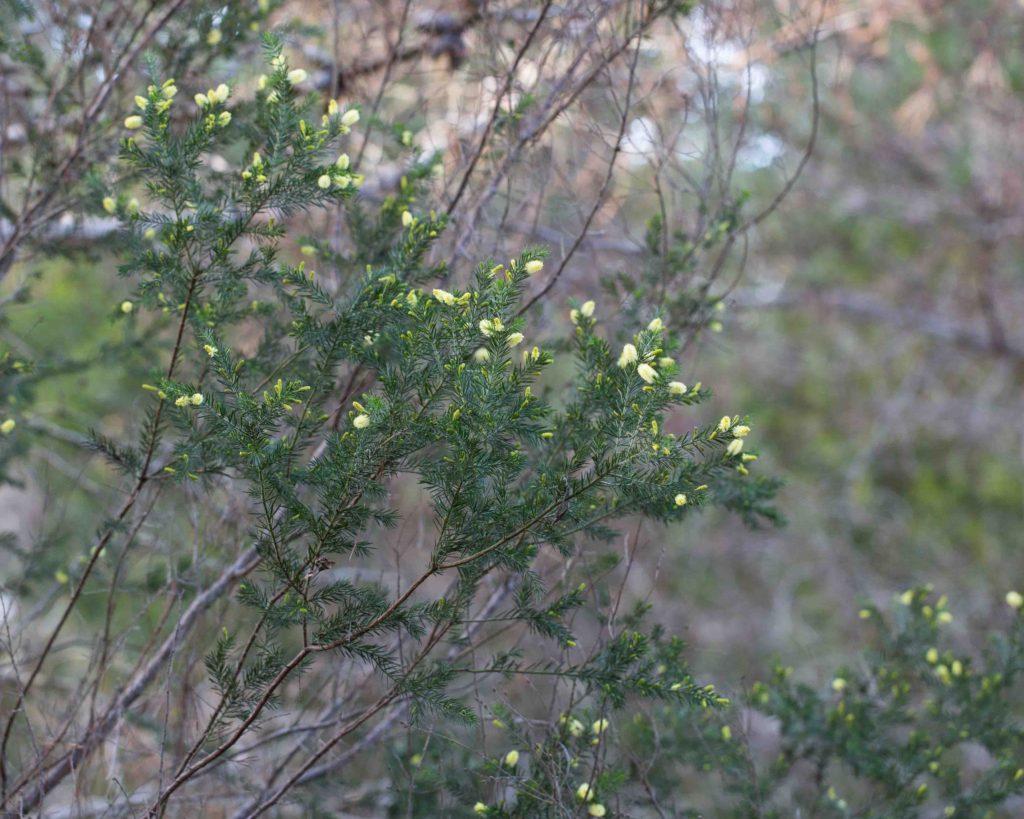Fabaceae: Pea Family — Acacia / Wattle
Acacias are all Australian natives, widely planted but sometimes invasive. They are simultaneously enjoyed for their brilliant yellow spring flowers, and cursed by those who are allergic to their pollen. For identification, it is helpful to note that flowers tend to be either spherical or cylindrical. Also, leaves are sometimes compound but mostly simple, with the simple leaves varying in shape and number of veins. Strictly speaking, Acacia leaves do not have separate blades. What appear to be blades are in fact expanded and flattened petioles. This explains why they can have longitudinal veins, a characteristic normally confined to monocots such as lilies, irises and orchids. For simplicity, the descriptions of the plants below will ignore this technical nicety.
Bailey Acacia – Acacia baileyana
Height:
< 10 m
Habitat:
Roadsides, disturbed areas
Blooms:
Feb–Apr
Notes:
This tree produces dramatic flower displays. The flowerheads are bright yellow and spherical. Leaves are silver-blue and bipinnately compound. There are 2–5 pairs of leaflets, each < 3 cm long, further subdivided into 8–24 linear sub-leaflets each < 7.5 mm long. Its small leaves allow this tree to be distinguished with ease from Silver Wattle (Acacia dealbata, see below), the only other Acacia commonly found in the county with pinnate leaves.
Knife Acacia / Knife-leaf Wattle – Acacia cultriformis
Height:
< 4 m
Habitat:
Roadsides, disturbed areas
Blooms:
Mar–May
Notes:
This large shrub is uncommon in Monterey county. The flowerheads are spherical and bright yellow. The green to gray-green leaves are distinctive. They are asymmetrical, with the lower leaf margin more or less straight, and the upper margin rounded, but with an angle so that the leaf appears almost triangular in shape.
Silver Wattle – Acacia dealbata
Height:
< 30 m
Habitat:
Roadsides, disturbed areas
Blooms:
Feb–Mar
Notes:
This is generally an escape from cultivation, classified as moderately invasive. It can be a large tree, which in spring produces a mass of bright yellow flowers, in spherical heads. It is most easily recognized by its large, bipinnately compound, silver-blue leaves. They have 6–30 pairs of leaflets, each 15–55 mm long, further subdivided into 15–70 linear sub-leaflets each < 5 mm long. The large leaves and greater number of leaflets and sub-leaflets allow this tree to be distinguished with ease from Bailey Acacia (Acacia baileyana, see above), the only other common Acacia found in the county with pinnate leaves. Like most acacia, its fruits are long, pendulous pea-like pods, 2–11 cm long.
Sydney Golden Wattle – Acacia longifolia
Height:
< 10 m
Habitat:
Sandy, disturbed areas, coastal
Blooms:
Jan–Apr
Notes:
This acacia has simple leaves with 2–4 veins. Leaves are 5–15 cm long, 10–25 mm wide, narrowly elliptic to lance-linear in shape. Flowers are bright yellow, in spike-like heads, 2–5 cm long. Fruits are 5–15 cm long.
Blackwood Acacia – Acacia melanoxylon
Height:
< 30 m
Habitat:
Disturbed areas
Blooms:
Feb–Mar
Notes:
This acacia is a tallish tree, distinguished by its pale yellow to cream-colored flowers, in racemes of 2–8 spherical heads. It has simple leaves with 3–5 veins. Immature leaves, confusingly, are bipinnate. It spreads aggressively and is classified as invasive. The fruits are unusual, with a yellow to red aril encircling the seed in an irregular double fold. For anyone who delights in lychee fruit, the aril is the part of the fruit that is eaten with such pleasure. Photo #2 below by CJH.
Everblooming Acacia / Wattle – Acacia retinodes
Height:
< 10 m
Habitat:
Disturbed areas
Blooms:
Feb–Mar
Notes:
This small acacia has leaves that are similar to Sydney Golden Wattle (Acacia longifolia, see above). However, they are generally longer (3–20 cm) and more slender (3–14 mm wide), with only a single vein. Occasionally the leaves are a little broader and almost spoon-shaped, but still with the distinctive single vein. Helpfully, the yellow to cream flowers are also different, in racemes of 5–9 spherical heads rather than spikes.
Star Acacia – Acacia verticillata
Height:
< 5 m
Habitat:
Disturbed areas
Blooms:
Feb–Apr
Notes:
This small acacia is easily distinguished by its needle-like leaves, which are 1–2 cm long and generally whorled. Flowers are pale yellow, in small racemes of 1–3 elongated heads. Fruits are pods 2–9 cm long.
